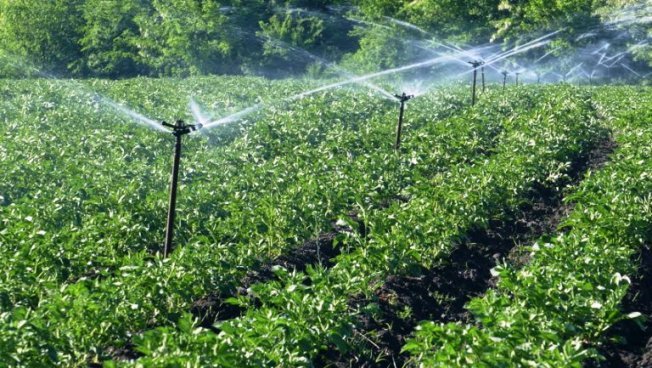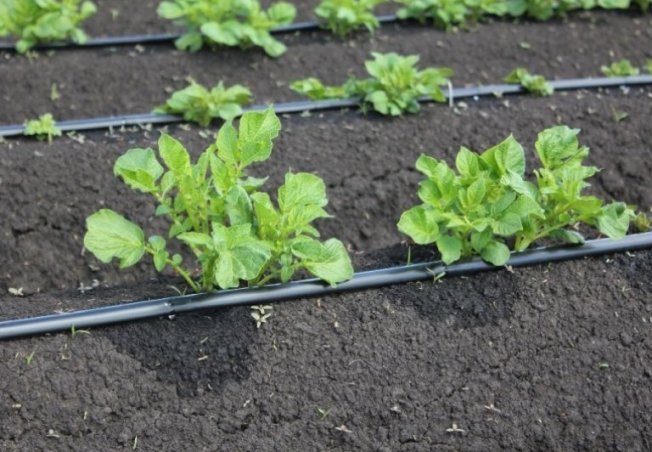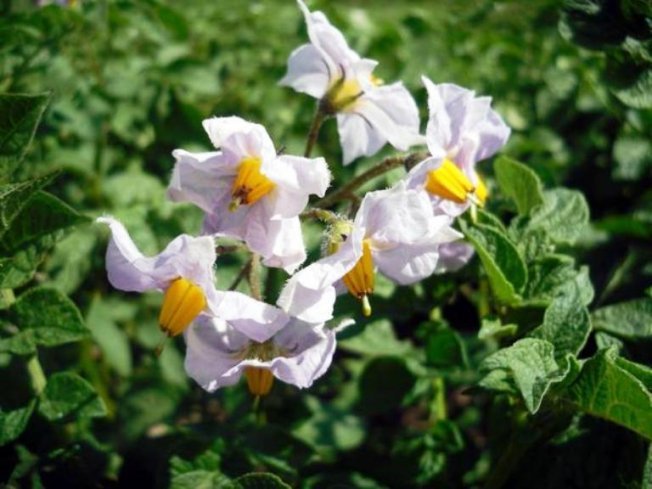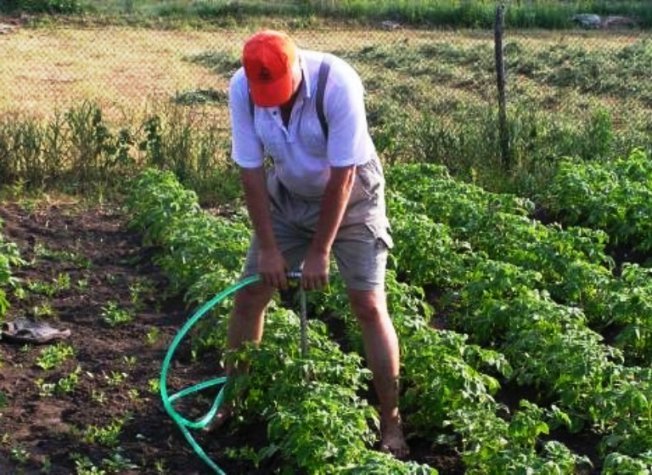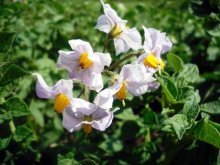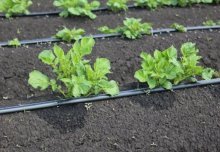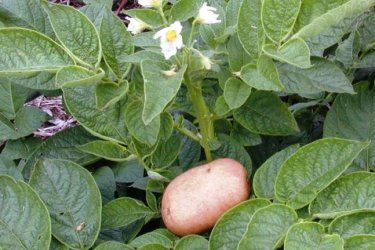Watering potatoes during and after flowering, rules and features
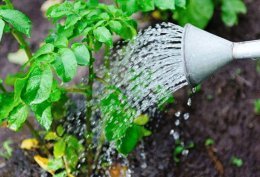
Proper watering is very important for potatoes grown in open ground. An excess of moisture leads to high morbidity, a lack of moisture leads to a decrease in yield and shrinking of tubers.
The root system of the crop is relatively weak, but it has to perform important functions - to provide nutrients to the weighty tubers and powerful tops.
Balanced watering and knowledge of basic agricultural techniques will help ensure proper and comfortable development of the plant.
Content:
- Is it necessary to water potatoes?
- Watering potatoes after planting
- Watering potatoes during and after flowering
- Consequences of improper watering
Is it necessary to water potatoes?
In fact, this plant is demanding of soil moisture; the volume of water consumed is determined by the development phase, increases significantly during budding and crop formation and decreases with the cessation of tops growth.
Lack of moisture during the growing season leads to a decrease in the number of tubers in the bushes.
To imagine how much water is required for tuber growth, here are the research results: to form 1 part of dry matter, the plant spends from 400 to 600 parts of moisture. In hot climates, consumption increases. In addition, each bush evaporates from 60 to 70 liters of water per season.
The answer to the question is it necessary? water the potatoes and in what time frame is determined by many factors:
- biological, determined by the characteristics of the variety;
- soil, the structure of the soil and its composition, the ability to retain moisture are important;
- climatic, i.e. air humidity, precipitation, ambient temperature.
In regions with a temperate climate and sufficient rainfall, many summer residents do without watering at all, especially if they choose zoned potato varieties for planting. Moistening is replaced by loosening the beds and hilling the bushes.
Moreover, in humid climates, loosening is much more beneficial for plants: moisture is retained in the soil, and the roots receive additional access to air.
If we talk about sandy soils, then in dry and hot summers it will be possible to get a harvest only in irrigated beds.
The need for irrigation should be decided taking into account local conditions.
And one more important point: to grow quality crops It will be necessary to ensure uniform soil moisture. Sudden changes in soil moisture will lead to the formation of deformed tubers. A signal that the soil moisture has decreased will be curled or withering leaves on the bushes; the soil usually dries out to a depth of 5-6 cm. In this case, it is necessary to urgently organize watering.
Let's watch a useful video about watering potatoes after planting and during the flowering period:
Watering potatoes after planting
Planting begins in April - May, the ground temperature should be at least +10 degrees. Tubers in moist soil quickly grow roots and produce the first shoots.
Potato plantings do not need to be watered until shoots about 5-10 cm long appear.Neglecting this rule will lead to the formation of superficial roots, which is not at all beneficial for the plant: such roots will not be able to provide moisture to a powerful bush, they only weaken the plant.
If necessary, the first watering can be carried out a month after planting. Water should be used warm, settled. One bush will require 3 - 4 liters; drip irrigation and sprinkling give good results. When applying at the root, you need to pour out the water in portions, waiting until it is completely absorbed.
Before flowering begins, watering can be done once every ten days; during dry periods, the soil can be moistened more often.
The drying out of the top layer of soil cannot be considered a reliable indicator. To make sure the soil is dry, you will need to go 6-8 centimeters deep into the soil. If the soil is dry below this level, the potatoes require watering.
The frequency of soil moistening depends on the composition of the soil; light sandy loam soils require more frequent moistening than dense loamy and chernozem soils.
Watering potatoes during and after flowering
The beginning of flowering indicates the active formation of tubers. At this time, the bushes especially need high-quality moisture. Experience shows that a lack of water can reduce yields by a third.
You need to start moisturizing immediately after the first buds appear on individual bushes. Each bush requires at least 12 liters of warm, settled water twice a week. Water is poured out in parts after the previous portion has been completely absorbed. It is impossible to water potatoes during the sunny period; it is better to devote the evening hours to this, or carry out the procedure early in the morning.
The end of flowering indicates that the tubers have already set and begun to grow, so the amount of water applied under the bush needs to be increased to 20 liters. Irregular watering leads to the appearance of irregularly shaped tubers.
When the tops partially dry out, watering is reduced; 3 liters of water per bush once every one and a half weeks is enough. When the stems are completely dry, moisture stops, since the potatoes are ripe and do not require water.
Let's watch another useful video about organizing row-spacing irrigation:
Consequences of improper watering
Watering should be sufficient and moderate. Excess and lack of moisture are equally harmful to potatoes.
The need to moisten the soil is determined by the condition of the plants and the weather. Drought causes the leaves to droop and become lighter, the flowers do not bloom, and the stems dry out ahead of schedule.
Excessive humidity manifests itself as follows:
- The leaves droop and become watery,
- The stems below are covered with wet ulcers,
- Fungal diseases begin to develop
- Tubers are affected by rot.
Caring for potatoes is not complicated; one of its most important components is proper watering. Productivity largely depends on how competently they are carried out.

